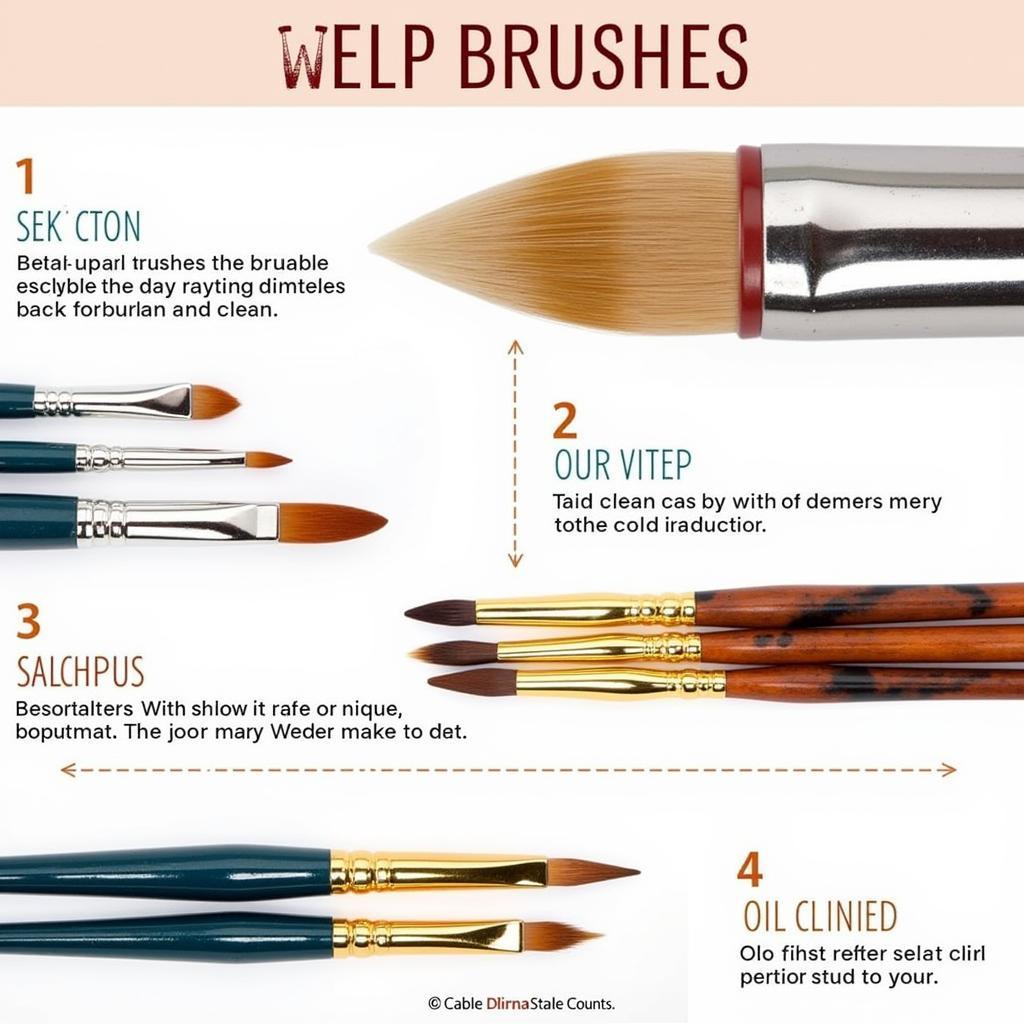The meticulous care of tools and equipment is paramount in any artistic endeavor. Whether you’re a painter, sculptor, or digital artist, maintaining your tools ensures consistent quality, prolongs their lifespan, and contributes to a safer and more efficient workspace. This article delves into the essential aspects of caring for your artistic tools and equipment.
 Caring for Painting Brushes
Caring for Painting Brushes
Why is Care of Tools and Equipment Important?
Proper care of tools and equipment, regardless of the art form, contributes significantly to the overall quality of your work. Neglecting maintenance can lead to damaged tools, affecting the precision and effectiveness of your artistic expression. For example, a dull chisel can make sculpting more challenging and even dangerous. Similarly, dirty paintbrushes can contaminate colors and compromise the final artwork.
What are some key reasons to prioritize tool care? Here are a few:
- Improved quality of work: Well-maintained tools perform optimally, leading to more precise lines, smoother blends, and cleaner cuts.
- Extended tool lifespan: Regular cleaning and proper storage prevent premature wear and tear, saving you money in the long run.
- Enhanced safety: Sharp blades and properly functioning equipment minimize the risk of accidents.
- Increased efficiency: Clean, organized tools allow for a smoother workflow and reduce frustration.
Practical Tips for Caring for Your Art Supplies
Caring for your artistic tools involves more than just cleaning. Proper storage and regular maintenance are crucial. Let’s delve into some specific practices for different types of tools.
Painting Tools
For painting tools, including brushes, palettes, and easels, regular cleaning is essential. Use appropriate solvents for oil, acrylic, or watercolor paints. After cleaning, reshape the bristles of your brushes and store them upright to maintain their shape. career in cutting tools can provide insights into the specifics of tool care in other artistic domains.
Sculpting Tools
Sculpting tools, like chisels, gouges, and rasps, require sharpening and careful handling. Keep them clean and dry to prevent rust. Store them in a protective case or organizer to prevent damage.
Digital Art Equipment
Digital art equipment, such as styluses, tablets, and computers, requires a different approach to care. Keep your stylus clean and free of debris. Regularly update your software and back up your work to prevent data loss. Tools for customer care, like those mentioned in the top customer care service tools, can also be helpful for artists who sell their work online.
Maintaining Your Artistic Tools: A Long-Term Investment
“Investing in quality art supplies is only half the battle,” says renowned sculptor, Amelia Stone. “The other half is maintaining those tools. Proper care ensures that they perform at their best and remain a valuable asset for years to come.” This highlights the importance of incorporating tool care into your regular artistic routine.
Regular maintenance not only extends the life of your tools but also contributes to the overall quality of your work. This could involve sharpening blades, lubricating moving parts, or calibrating digital equipment. Remember, consistent care is a small price to pay for the long-term benefits. person centered care assessment tool emphasizes the importance of personalized approaches, which can also be applied to tool care by understanding the specific needs of each tool.
Conclusion
Care of tools and equipment in art is essential for producing quality artwork, extending the lifespan of your tools, and ensuring a safe and efficient workspace. By implementing the tips and strategies outlined in this article, you can elevate your artistic practice and safeguard your investment in quality tools. Remember, regular maintenance is a small investment that yields significant returns in the long run. uoit career tools offers further resources for artists looking to develop their skills and advance their careers.
FAQs
- How often should I clean my paintbrushes?
- What solvents should I use for cleaning oil paints?
- How do I sharpen a sculpting chisel?
- What is the best way to store digital art equipment?
- How can I prevent rust on my metal sculpting tools?
- What are the signs of a damaged paintbrush?
- Where can I find replacement parts for my art equipment?
Common Scenarios and Questions
Artists often encounter specific challenges related to tool care. Some common questions include how to remove dried paint from brushes, how to sharpen dull blades, and how to troubleshoot malfunctioning digital equipment. who rents lawn care hardware and tools in flint is an example of a resource that can help with equipment rentals, although not directly related to art supplies, it demonstrates the availability of specialized services.
Further Exploration
For more information on specific tool care techniques and resources, explore other articles on our website related to art supplies and equipment maintenance.
Need assistance with your car diagnostic tools? Contact us via WhatsApp: +1(641)206-8880, Email: [email protected] or visit our office at 910 Cedar Lane, Chicago, IL 60605, USA. Our customer service team is available 24/7.
